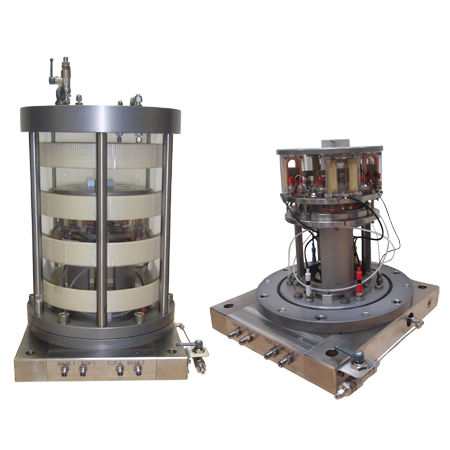RESONANT COLUMN APPARATUS (STOKOE TYPE)
Product Code : S-RCA
The variation in these parameters with increasing strain magnitude allows engineers to conduct dynamic response analyses, such as those using finite element and non-linear analytical methods, which enable performance assessment of natural and engineered structures subjected to dynamic and cyclic loadings.
| Key features | Benefits to the user |
|---|---|
| Current driven actuator using a transconductance power amplifier: | The impedance of magnet / coil devices change with frequency. At higher frequencies, using a constant voltage amplifier the current would be seen to reduce. As the torque is directly proportional to current, the torque will also reduce and a non-linear torque input would affect results. This effect is removed in the GDSRCA by using a current driven power amplifier. |
| Designed to provide maximum rigidity: | Providing minimum losses and a more consistent frequency response. With no rigid support to the top cap it is completely free vibrating. |
| Dedicated GDS RCA software is used for control and data acquisition of the RCA apparatus: | Simple automated tests ensures consistent results |
| Low equipment damping: | The software switches the hardware to provide an ‘open circuit’ through the coils during free vibration decay, which prevents ‘back’ EMF generation and reduces equipment damping effects. |
| Electro-magnetic drive system: | Which incorporates precision wound coils and composite sintered neodymium iron boron (NdFeB) “rare-earth” magnets. |
| Internally mounted, counter-balanced accelerometer: | Used to measure vibratory response of the sample. |
| Internal cell: | To surround sample with water, to avoid air penetrating the membrane. |
| Operating Frequency (Hz) |
0 to 300Hz |
|---|---|
| Pressure Range (MPa) |
1MPa (Standard), 2MPa and 3MPa |
| Sample Sizes |
50mm, 70mm, 100mm, 150mm |

 Enquiry:hkmarketing@epc.com.hk
Enquiry:hkmarketing@epc.com.hk 











